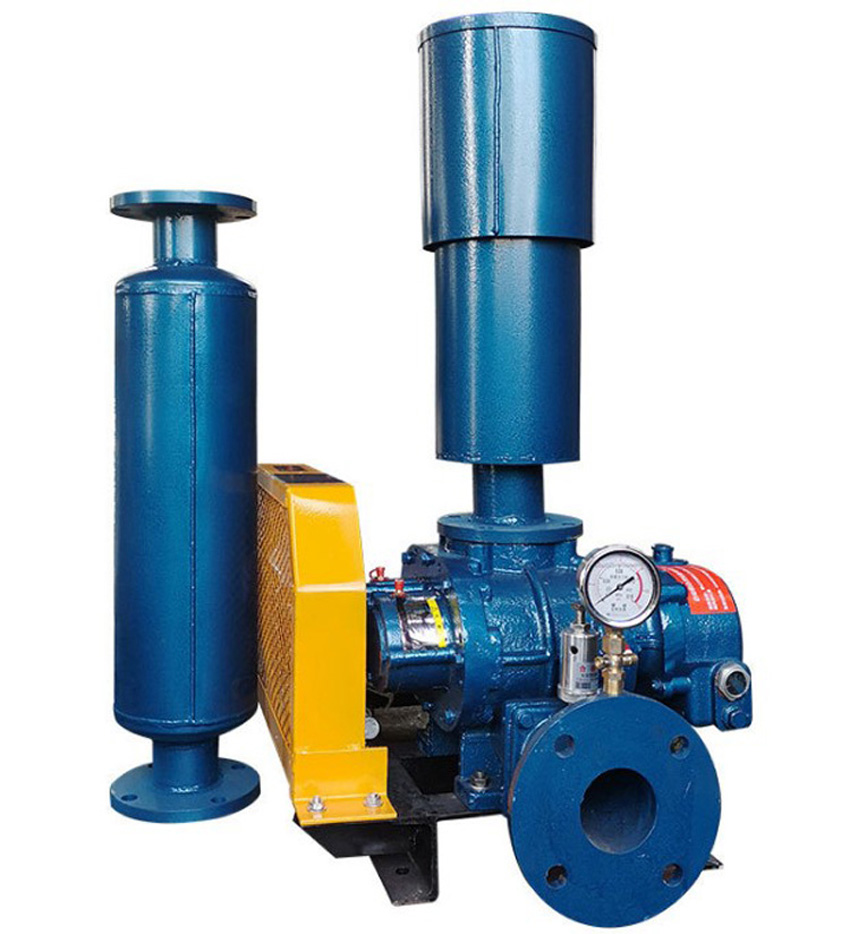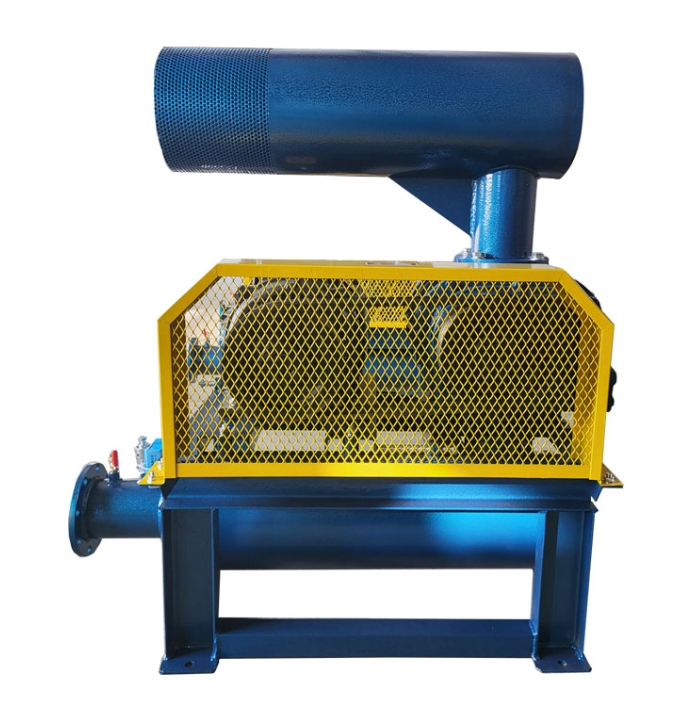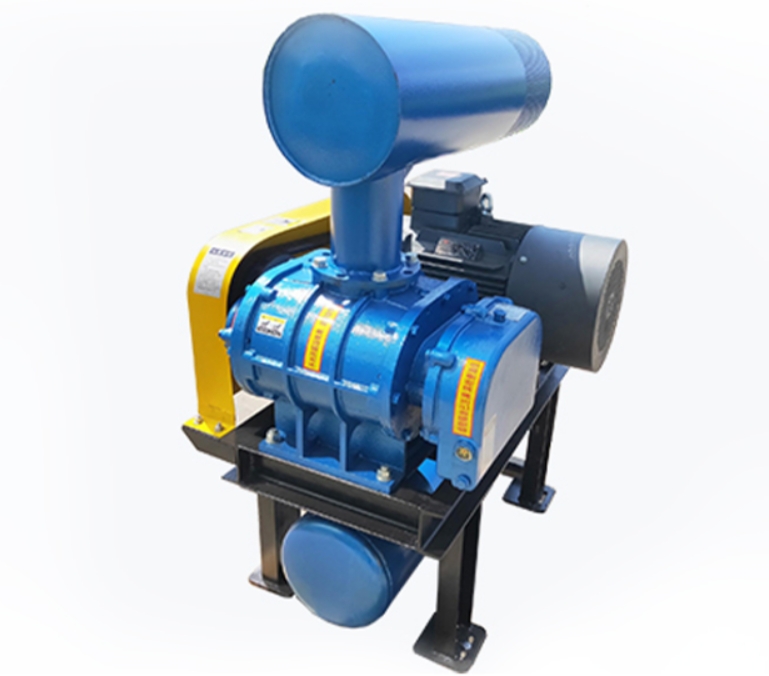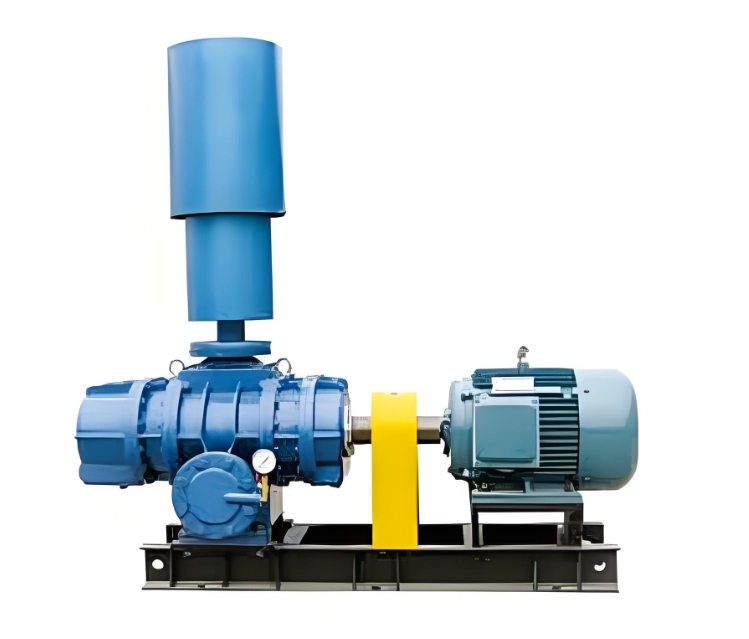Roots blower for aquaculture

Roots blower for animal husbandry is a widely used equipment in livestock and aquaculture, mainly used to provide ventilation, oxygenation and other functions to improve the breeding environment and promote biological growth. The following is a detailed introduction to the Roots blower used in aquaculture:
1、 Working principle
The working principle of Roots blower is to use two blade shaped rotors (usually three blades) to compress and transport gas through relative motion inside the cylinder. This type of fan ensures continuous gas flow and reduces leakage through small gaps between the rotors. During the rotation of the rotor, gas is taken away from the suction port. When it moves to the vicinity of the exhaust port and connects with the exhaust port, there is a sudden increase in pressure in the working volume due to the reflux of high-pressure gas, and then the gas is transported to the exhaust channel. The two rotors work alternately in sequence to achieve continuous gas transportation.
2、 Structural composition
The Roots blower for aquaculture mainly consists of five parts: casing, wall panel, impeller, oil tank, muffler, etc. The functions of each part are as follows:
1. Chassis: plays a supporting and fixing role.
2. Wall panel: used to connect the casing and impeller, and support the rotation of the impeller, while also providing end face sealing effect.
3. Impeller: It is the rotating part of a fan, divided into two types: two bladed and three bladed. However, the three bladed impeller gradually replaces the two bladed impeller due to its advantages of smaller air flow pulsation, lower noise, and smoother operation.
4. Oil tank: used to store lubricating oil for lubricating gears and bearings.
5. Muffler: Used to reduce the noise generated by airflow pulsation during the inlet and outlet of the fan.
3、 Application advantages
1. Improving ventilation efficiency: Roots blowers can effectively reduce the temperature and humidity of the breeding farm, reduce odors and dust, improve air quality, and provide a good growth environment for livestock, poultry, and aquatic organisms.
2. Good oxygenation effect: In aquaculture, Roots blowers can provide sufficient oxygen to promote respiration and growth of aquatic organisms.
3. Stable operation: Roots blower has a simple structure, stable operation, and can operate continuously for a long time, meeting the ventilation and air exchange needs of the breeding farm.
4、 Selection suggestions
1. According to the aquaculture area and water depth, for larger aquaculture areas or deeper water bodies, Roots blowers with larger diameters and higher power can be selected. Common models of Roots blowers include SR50-350 and Three Leaf Roots blowers.
2. Consider energy consumption and cost: When choosing a Roots blower, it is necessary to comprehensively consider energy consumption and cost, and choose an economically reasonable power and flow rate.
3. Choose products with reliable quality: Priority can be given to brands and manufacturers with good reputation and credibility in the market to ensure product quality and after-sales service.
5、 Usage and maintenance
1. Regular cleaning and maintenance: Regularly clean and maintain the Roots blower to ensure its normal operation.
2. Pay attention to voltage and current: During use, pay attention to the voltage and current of the Roots blower to prevent overload damage to the equipment.
3. Replacing lubricating oil: Under normal conditions, the lubricating oil must be replaced after the unit has been running for 1000 hours, and attention should be paid to whether the cooling of the lubricating oil is normal and the quality of the lubricating oil.
In summary, Roots blowers for animal husbandry have been widely used in livestock and aquaculture due to their advantages of simple structure, stable operation, and good oxygenation effect. Through reasonable selection and installation, as well as regular maintenance, it can ensure long-term stable operation and meet the needs of aquaculture.





